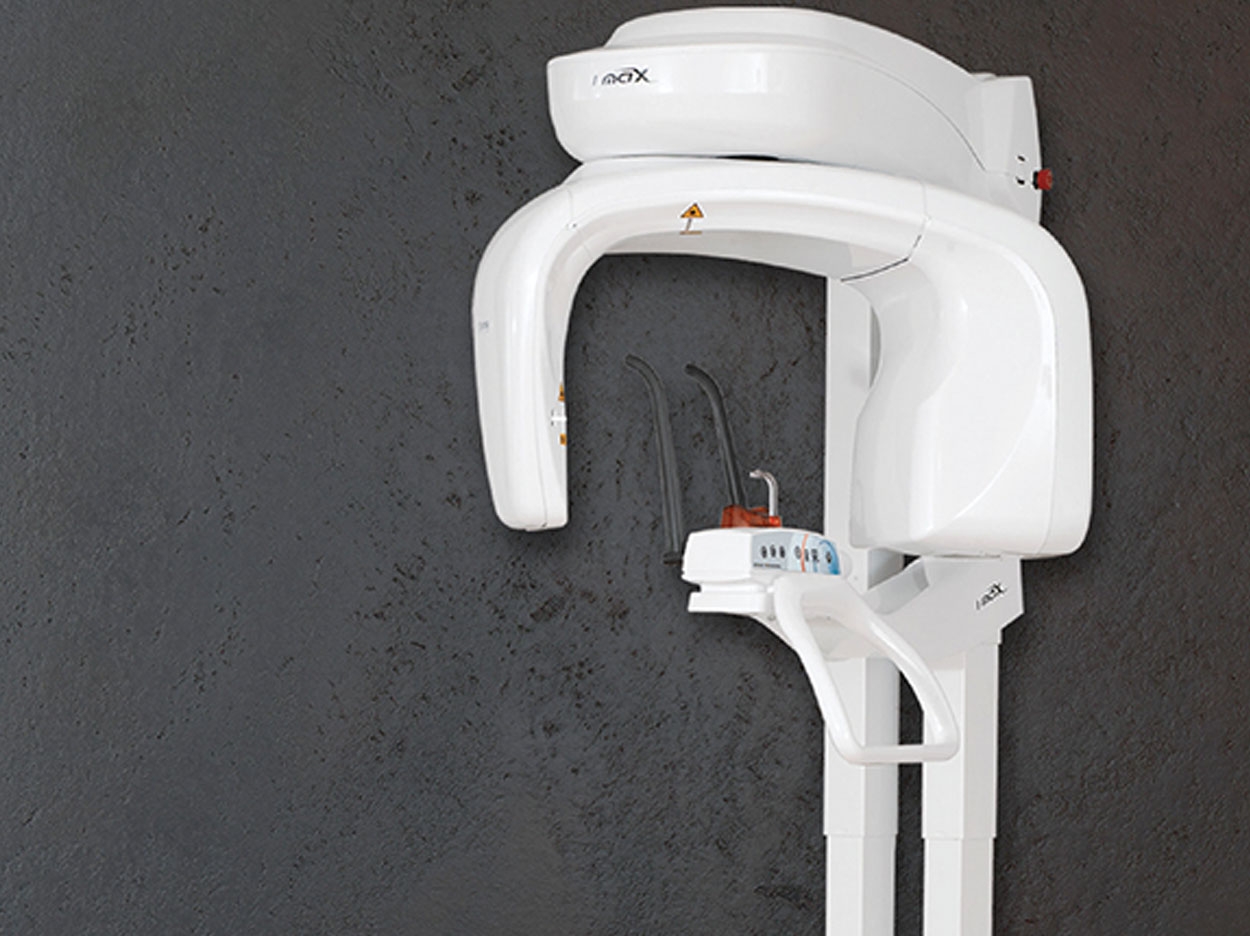
 |
| Figure 1. The Owandy I-Max 3D. |
 |
| Figure 2. The MyRay Hyperion X5. |
My quest at dental meetings is to run up and down exhibitor aisles researching products (so you don’t have to). My Fitbit averages more than 50,000 steps during these meetings!
At the end of last year, there was a flurry of meetings such as the ADA Annual Session and the Greater New York Dental Meeting, and a number of new products appeared on their exhibit floors. Throughout the year, I report on these products. Some I’ve had a hands-on chance to use; others I just found interesting. Here are a few that are not mainstream (yet) that caught my eye.
While 3-D imaging and cone-beam units continue to proliferate, many practices do just fine with results they get from panoramic systems. Companies continue to improve existing systems and introduce new ones. In the past, Air Techniques (the Provecta S-Pan Panoramic X-Ray system [airtechniques.com]) and Sirona (ORTHOPHOS SL DCS [sirona.com]) enhanced images by using multiple layers, getting an extremely sharp final result. New units from Owandy (owandy.com) and Cefla (cefladental.com)address the physical footprint of the existing units and offer a unique alternative: wall-mounted panoramic units that are compact and obviously take up less real estate in the office. If these last 2 names are unfamiliar to you, they have been around for a long time in the international marketplace but are lesser known here. Their products are all top of the line and certainly competitive with others that are more visible in the United States.
The Owandy I-Max 2D wall-mounted system is not only sleek and compact, but it is also able to deliver 12 modes, including extraoral bite-wings, TMJ closeups, and more. It offers other features like low-dose setting, Internet connectivity (eliminating the need for a dedicated computer), layering technology, and more. And of course, the wall mounting is very space-efficient. Owandy also has 3-D systems both traditional floor-mounted and wall-mounted (I-Max 3D [Figure 1]) versions as well.
The MyRay Hyperion X5 (Figure 2) from Cefla also boasts a wall-mounted pan with multiple settings, and it also has a low-dose setting and Internet connectivity, which allows connectivity to tablet devices, making images portable and easy for patients to view. The interface is a very slick touchscreen, making image setup easy to do. In Cefla’s 3-D division is the NewTom, which has one of the very first cone-beam systems in the marketplace.
There are differences in de-sign and patient positioning between these 2 units, giving an office more options to choose from. If you are in the marketplace for any digital radiography—from sensors on up—you owe it to yourself to look at these companies.
A company that generated lot of buzz at the recent meetings was St. Renatus (st-renatus.com), with its product Kovanaze, the first nasal oral anesthetic. Using a small syringe (no needle), the patient sniffs the solution tetracaine HCl and oxymetazoline HCl into one nostril, waits a short period of time, and then sniffs in the other nostril. This creates profound tooth anesthesia to the 8 upper anterior teeth—first premolar to premolar. Some studies show second premolars affected also. And there is no soft-tissue numbness, so you can keep control of the smile-line in anterior cosmetic cases. This item is primarily designed for needle-phobic patients and those who are very sensitive to anterior injections. One of its uses is the insertion visit of anterior crowns or veneers where you might want to use a lot of air and water on those sensitive teeth and want to see the natural smile results right away.
Another niche product I noted was from TAUB Products (taubdental.com). Since the 1930s, it has always had innovative dental materials for dentists and labs, and it is constantly looking for products to solve common problems that are not addressed by other larger manufacturers. Several highly visible practitioners such as Ross Nash use its products and provide feedback for improvement and new ideas. Although Fusion ZR, its new crown and bridge cement (which comes in “clear” ), and Zero-G, its new implant cement, look intriguing, its new Liquid Magic provides a great solution to a common issue. Before cementing a crown on a screw-retained implant abutment, dentists use all sorts of things to fill in the screw hole; a cotton pellet is quite common as is a little squirt of impression material. At a recent course, I learned about packing in plumbers’ white Teflon tape into the screw sleeve. All of these are used because they are easy to remove in case you have to get back and tighten a screw later on. Liquid Magic is the easiest of all solutions. It comes in a small syringe and acts like a flowable composite, injected into the hole and light-cured. It turns into a rubbery, nonsticky material that can easily be removed with the flick of an explorer.
As you might have surmised, my quest at dental meetings is to run up and down exhibitor aisles researching products (so you don’t have to). My Fitbit averages more than 50,000 steps during these meetings! As I have said before, just like the old Yellow Pages ad advocates: “Let Paul do the walking.” I’ll see you in Boston, and Chicago, and Atlanta, and….
Related Articles












